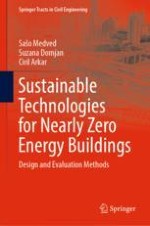2019 | OriginalPaper | Chapter
11. Ventilation of nZEB
Authors : Sašo Medved, Suzana Domjan, Ciril Arkar
Published in: Sustainable Technologies for Nearly Zero Energy Buildings
Publisher: Springer International Publishing
Activate our intelligent search to find suitable subject content or patents.
Select sections of text to find matching patents with Artificial Intelligence. powered by
Select sections of text to find additional relevant content using AI-assisted search. powered by
